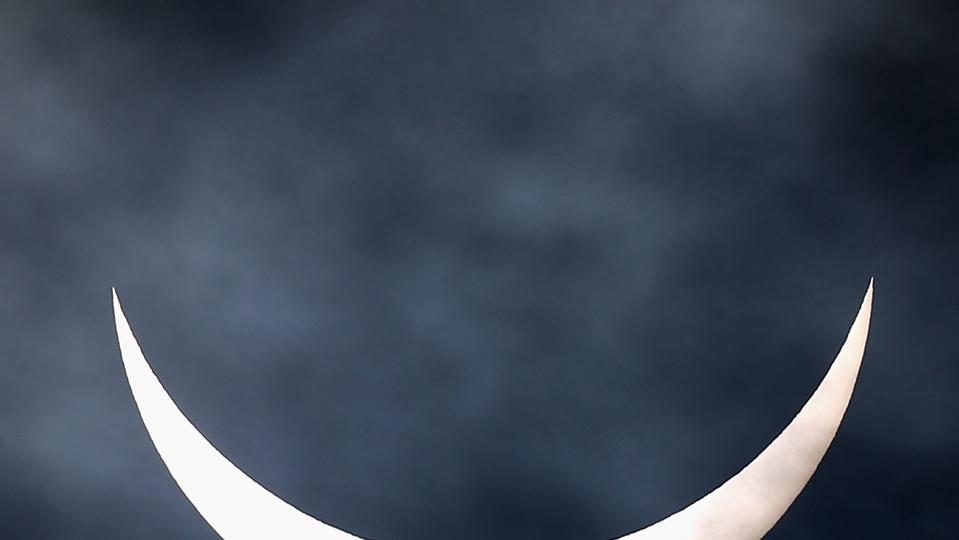


On Saturday, March 29, 2025, a partial solar eclipse will be visible across the northeastern U.S., eastern Canada, Western Europe, northwestern Africa and northern Russia. While this is not a total solar eclipse — so no location will see totality — the event will still offer a deep partial eclipse and, from North America, potentially spectacular views of an eclipsed “smiley face” sunrise.
A rare partial solar eclipse is seen over Northamptonshire on March 20, 2015 in Northampton, ... More
The eclipse begins in North America, with almost 94% of the sun blocked by the moon at sunrise from Nunavik, Quebec, Canada. In the U.S., the biggest eclipse will be 85% in northwestern Maine.
This eclipse is special because it will be in progress as the sun rises for much of North America. This means observers in the northeastern U.S. and eastern Canada will see the rare sight of a partially eclipsed sun emerging above the horizon.
From some locations in southeastern Quebec, southwestern New Brunswick and northeastern Maine it will be possible to see a “double sunrise,” with the moon’s silhouette causing the cusps of the crescent sun to rise separately. From one such place — the beach just south of South Lubec in Maine — an 83% eclipsed “double sunrise” rise will mark the U.S.-Canada border between Quoddy Head State Park in Maine (the easternmost point of the U.S.) and Campobello Island in New Brunswick. \
Eclipse glasses that comply with the ISO 12312-2 international standard should be used to view any part of this eclipse. Suppliers of safe solar eclipse glasses and solar filters can be found on the American Astronomical Society’s Suppliers of Safe Solar Filters & Viewers list.
The entire eclipse will begin at 8:50 UTC (4:50 a.m. EDT) and end at 12:43 UTC (8:43 a.m. EDT), but exact timings for sunrise and maximum eclipse will differ according to the observer’s exact location. Timeanddate.com’s Eclipse Calculator offers a schedule for any given location, as well as a simulation of what the eclipse will look like.
In the U.S., the eclipse will be seen to varying degrees from 13 U.S. northeast states between 6:13 and 7:17 a.m. EDT. Those states are Maine, New Hampshire, Vermont, Massachusetts, Rhode Island, Connecticut, New York, New Jersey, Pennsylvania, Delaware, Maryland, Washington D.C. and Virginia.
Although everyone the region can watch the partial eclipse as it rises into the sky, seeing a partially eclipsed sunrise requires careful planning. Since the sun will be low on the horizon, finding a clear eastern view — such as a beach, lake or open field — is crucial. The interactive Google Map of the eclipse on Xavier Jubier’s website, as well as Timeanddate.com should be used to verify local conditions, accessibility and visibility before planning an observation.
Unlike the total solar eclipse seen across North America on April 8, 2204, when the moon’s dark umbral shadow created a path of totality, this eclipse will see only the moon’s outer penumbral shadow move across Earth. Another partial solar eclipse will be visible from North America on August 12, 2026, and the next total solar eclipses will occur in 2033 (Alaska), 2044 (the Dakotas and Montana and 2045 (across the U.S.).

